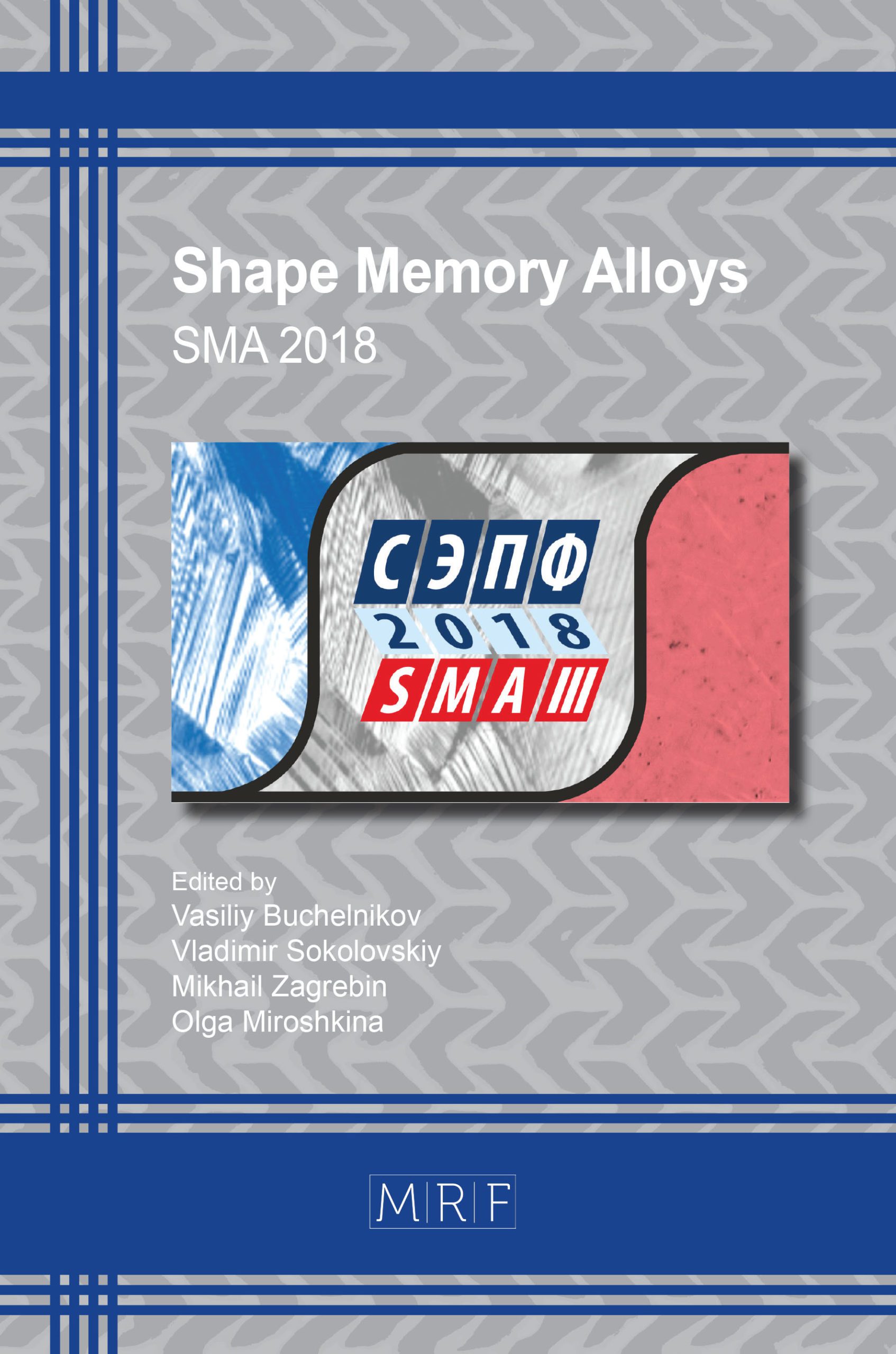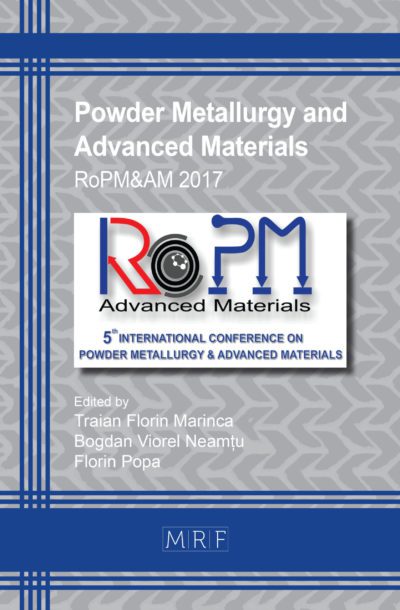Production of Biocompatible TiNi-based Porous Materials with Terraced Surface of Pore Walls
Sergey G. Anikeev, Nadezhda V. Artyukhova, Valentina N. Khodorenko, Alexander S. Garin, Victor E. Gunther
Abstract. The structural features of the sintered TiNi-based porous materials with terraced morphology of the pore wall surface have been studied. A porous alloy with the TiNi intermetallic compound in a two-phase state was produced by diffusion liquid-phase sintering of TiNi powder. In the samples obtained, the regions of melt formation exhibit a terraced relief of the pore wall surface. The terraces are located in the regions free of secondary-phase particles and propagate along the curved surface of the pore walls within one grain. Hexagonal areas are observed in some regions of the pore wall surface. The terraced relief is formed in the regions where the martensite crystals B19′ emerge on the surface of the pore walls.
Keywords
TiNi-based Alloy, Sintering, Powder Metallurgy, Structure, Martensite, Biocompatible Implants
Published online 11/15/2018, 5 pages
Copyright © 2018 by the author(s)
Published under license by Materials Research Forum LLC., Millersville PA, USA
Citation: Sergey G. Anikeev, Nadezhda V. Artyukhova, Valentina N. Khodorenko, Alexander S. Garin, Victor E. Gunther, ‘Production of Biocompatible TiNi-based Porous Materials with Terraced Surface of Pore Walls’, Materials Research Proceedings, Vol. 9, pp 9-13, 2018
DOI: http://dx.doi.org/10.21741/9781644900017-2
The article was published as article 2 of the book Shape Memory Alloys
References
[1] V.E. Gunther, V.N. Khodorenko et al., Shape Memory Medical Materials. Shape Memory Medical Materials and Implants, first ed., NPTS MITS, Tomsk, 2011.
[2] V.N. Khodorenko, S.G. Anikeev, O.V. Kokorev et al., An Investigation of Porous Structure of TiNi-Based SHS-Materials Produced at Different Initial Synthesis Temperatures, Russ. Phys. J. 60 (2018) 1758-1767. https://doi.org/10.1007/s11182-018-1279-8
[3] S. G. Anikeev, V. N. Hodorenko, T. L. Chekalkin et al.,. Fabrication and study of double sintered TiNi-based porous alloys, Smart Mater. Struct. 26 (2017) 057001. https://doi.org/10.1088/1361-665X/aa681a
[4] S.G. Anikeev, V.N. Khodorenko, O.V. Kokorev et al., Study of Structural Features of Porous TINI-Based Materials Produced by SHS and Sintering, Adv. Mat. Res. 1085 (2015) 430-435. https://doi.org/10.4028/www.scientific.net/AMR.1085.430
[5] V. Gunther et al., Delay Law and New Class Of Materials and Implants in Medicine, MA: STT, Northampton, 2000.
[6] S.S. Kiparisov, Powder Metallurgy, Metallurgiya, Moscow, 1980.
[7] S.G. Anikeev, A.S. Garin, N.V. Artyukhova et al., Structural and Morphological Features of TiNi-Based Powder Manufactured by the Method of Hybrid-Calcium Reduction, Russ. Phys. J. 61 (2018) 749-756. https://doi.org/10.1007/s11182-018-1456-9
[8] C.M. Wayman, Proc. Int. Symp. SMA–86 (1986) 59-72. https://doi.org/10.1557/PROC-86-59
[9] K. Otsuka, X Ren, Physical metallurgy of Ti–Nibased shape memory alloys Prog. Mater. Sci. 50 (2005) 511–678. https://doi.org/10.1016/j.pmatsci.2004.10.001
[10] O.G. Kozlova. Growth and morphology of crystals, MGU, Moscow, 1980.
































